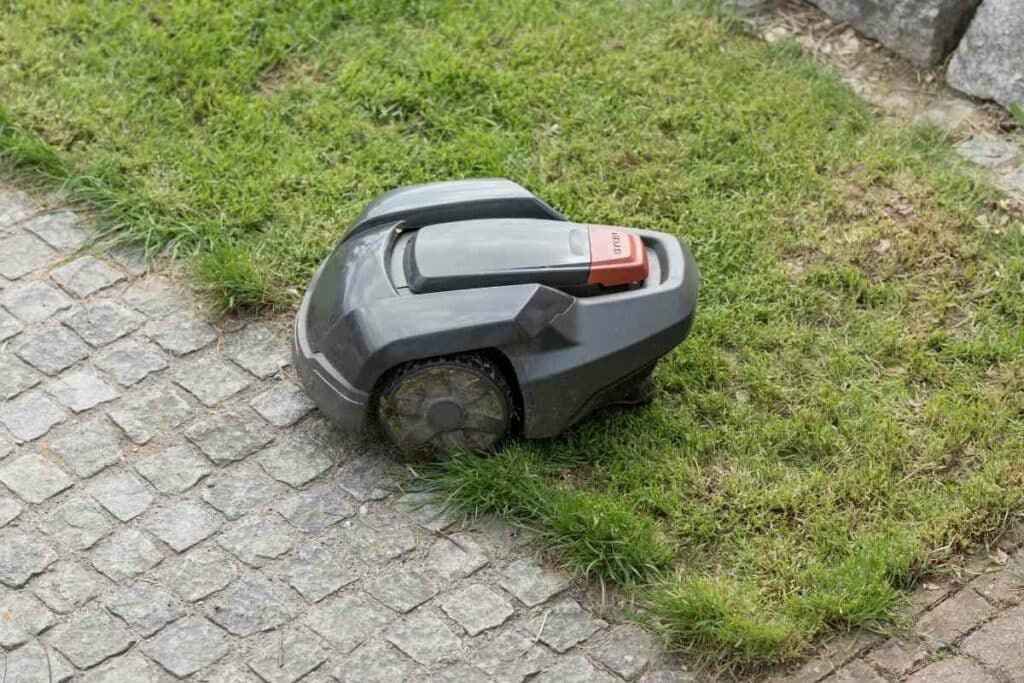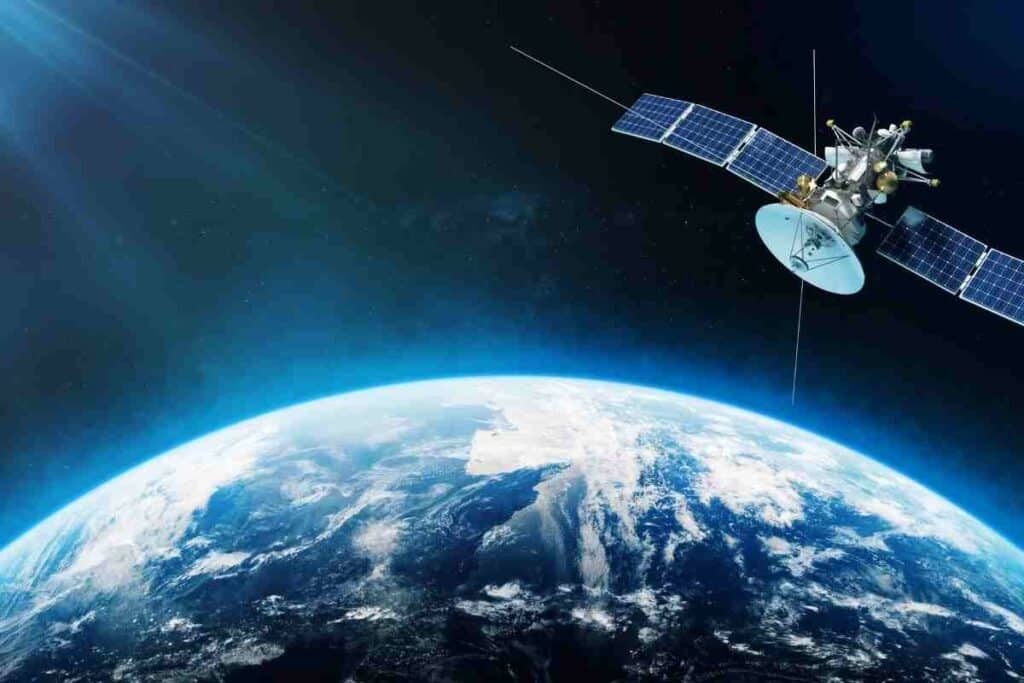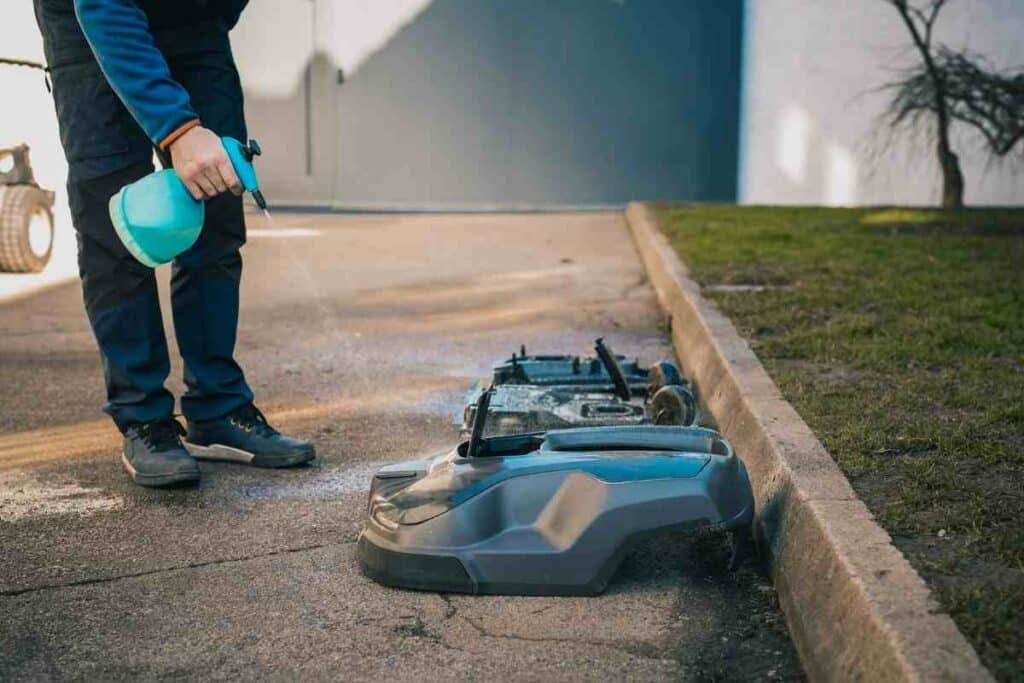Most models of robotic mower are entirely reliant on a perimeter or boundary wire that acts like a giant antenna to help your mower navigate effectively.
To get the best results from your mower, competent installation of this wire is an essential but arduous chore.
If being tangled in meters upon meters of high specification wire is not for you, you may be wondering if there is a robotic lawnmower without a perimeter wire.
Though most models of mower are reliant on perimeter wire there are some wire-free alternatives.
In this article, we will explain why wire is routinely used for mower navigation and explore the alternative navigation technologies that are becoming available.
Perimeter wire is the mainstream method of navigation for robotic mowers
Perimeter wire has been demonstrated to provide a reliable and robust navigation system for robotic mowers that is reproducible across any size and shape of lawn.
It is also
very affordable, meaning that robotic mowers are accessible to a greater number of homeowners.
This wire has a conductive copper center that is connected to the robotic mower’s charging station. When switched on, the charging station transmits a unique signal that travels around the length of the boundary wire.
The signal emanates through the wire so that the robotic mower can know where its boundary is and use the signal to navigate as it mows.
Aside from disconnection or a break in the wire, there is very little that can disrupt this system.
Installing perimeter wire can be tricky
However, the wire has to be correctly installed and kept intact or the mower will not operate properly, especially at the boundaries of the lawn.
Errors in the installation of perimeter wire are common and can lead to the mower failing to operate or inadequately mowing areas like edges and narrow passages.

If a raccoon, rabbit, or deer becomes partial to your wire and takes a bite, the whole perimeter fails and has to be reinstalled…
It’s easy to see why folks are looking for an alternative to perimeter wire
But it is hard to avoid as all the leading manufacturers of robotic mowers are using this technology. Its reliability means that the alternatives to perimeter wire have to compete with the accuracy and ease of navigation and technologies that can achieve this are not commercially widespread as yet.
Here are some of the alternatives that are currently being developed.
These alternative navigation technologies for robotic mowers are not yet mainstream but have the potential to overtake the perimeter wire because their setup is simpler. Here are the technologies to look out for:
Global Positioning System (GPS)
GPS-assisted navigation is already available in some high-specification robotic mowers from brands like Husqvarna or Robomow.
These robotic mowers do not rely exclusively on satellite navigation and still use the boundary wire that other mowers use. GPS navigation is used to enhance the accuracy of the mower’s cutting, helping it operate quickly and efficiently.

Manufacturers also use GPS to track the location of robotic mowers so they can be traced in the event of theft.
Robotic mowers cannot exclusively rely on GPS as yet because it is not sufficiently accurate as the location technology can detect position to within a few meters, which is not enough for keeping your lawn at its best.
GPS also uses a lot of energy as the mower has to boost the weak satellite signals, so there is still a lot of development required before this can overtake a perimeter wire.
Beacons
Because the current levels of localization by GPS do not have adequate accuracy, some robotic lawnmower manufacturers are developing a system of land-based radio frequency beacons that can help the mower navigate by GPS more accurately.
Location beacons can be quickly and easily staked in the ground at strategic positions to mark out a virtual boundary that the mower can use alongside GPS.
This form of assisted GPS, known as aGPS can increase the precision of GPS navigation in enclosed spaces like a garden. The beacons correct the positioning of the GPS so that the mower can recognize its boundaries.
Sensors
Senors are already used to carry out a wide range of functions in a robotic mower, including the detection of obstacles and rain.
Zucchetti Centro Sistemi SpA, creators of a robotic lawnmower that operates without a perimeter wire has already achieved the move to use these sensors to help a robot mow effectively wire-free.
Sensor-based robotic technologies use factors like humidity to distinguish between grass and hard surfaces.

The activation of these sensors prompts the mower to mow in a different direction. Despite its simplicity, sensor-based mowing has been demonstrated to be effective for most lawns. However, as it uses humidity, it may struggle in wet weather, or near ponds.
Camera-based navigation
Visual navigation technology is an important area of robotics and offers the potential for robotic mowers to ‘see’ the grass and other garden structures so it and navigate perfectly while cutting your lawn.
The visual capabilities of the mower have extensive utility and may even be able to alert the owner to lawn problems.
This technology uses artificial intelligence and machine learning to teach the mower how to recognize the structures in a garden.
Mowers that would use visual navigation would require an onboard video camera and complex software to carry out their work, technology that currently is extremely expensive and similar to the technology being used by self-driving cars.
Prototypes are extremely promising but it is likely to be many years before a model is brought to market.
Here are some examples of robotic mowers that do not use a perimeter wire
Most of these mowers are prototypes and not yet available but they give you a good idea of the direction in which robotic mowing technology is headed.
Take a quick look at these perimeter wire-free bots that soon will work in gardens across the country:
1.The TOADI
This compact little 3D-printed robotic mower is currently in development and very hush-hush. What we do know about it is that it does not require a boundary wire and relies on a 4K camera and artificial intelligence instead.
Prototypes have fallen into ponds or attempted to mow driveways, so there is still some work required. Take a closer look with this video:
2. GPS-RTK by Belrobotics
One of Europe’s leading robotics companies has developed a professional robotic mower that is perimeter wire-free.
It uses a form of assisted GPS known as real-time kinematic GPS that has higher accuracy than standard satellite navigation. Learn more in this informative video:
Current Best Models on Amazon
Rounding up
Looking for a robot lawnmower without perimeter wire is like taking a glimpse into the future of these mowers.
Being wire-free would make using these mowers ultra-convenient and save on the hassle and expense of replacing broken wires. Without a wire boundary, robotic mowers would be taking a giant leap towards becoming truly autonomous.
In the meantime, the trusty boundary wire is here to stay, and delivers great performance for an expansive range of robotic mowers.
To avoid the frustrating process of installing your mowers wire, why not arrange for professional installation and setup of your robotic mower including precise installation of the perimeter wire?
